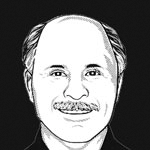Investors have earned a total of $1.5 trillion after fees from hedge funds over the past 10 years, according to a report jointly published by The Chartered Alternative Investment Analyst Association and the Alternative Investment Management Association. These gains came despite cumulative losses of more than $306 million in 2008. The paper does not say how many funds accounted for the bulk of the gains and how many generated losses for investors before shutting down.
The paper does, however, underscore the changing nature of hedge fund investors, pointing out that roughly 25 percent of hedge-fund assets managed worldwide comes from public and private-sector pension funds, while institutional investors invest some 75 percent. These kind of investors have shown a greater tolerance for much lower absolute returns than high net-worth individuals, who contributed the bulk of the assets in the 1980s and 1990s. Those earlier investors were drawn to high risk, high fee portfolios for their outsize returns. However, these days just 7 percent of investors are looking for high returns, says the study. “Pension funds would often rather have steadier returns with lower volatility than a higher return with greater volatility,” the study notes. “Hedge funds are designed to provide greater protection against the large drawdowns or peak-to-trough losses that the main asset classes sometimes experience.”
Hence, the generally consistent increase in total hedge fund assets in the face of average or mediocre performance. The study also confirms that hedge funds’ biggest value emerges during market downturns. For example, it points out that in the past 10 years, hedge funds’ biggest drawdown was 21.4 percent, between November 2007 and February 2009. During this period, the peak-to-trough performance for the Standard & Poor’s 500 was 57 percent and for commodities was 54 percent.
___
Thomas Sandell has been a busy writer of late.
On Thursday he fired off missives to two companies in which his New York firm, Sandell Asset Management, has activist holdings. The day before, he responded to an announcement earlier in the week from fiber-optic networking equipment maker JDS Uniphase Corp. that it had revised its bylaws to make it easier for shareholders to submit proposals to be voted on at its annual meeting or to nominate a director. “We are pleased that the company has amended its bylaws in a manner that provides more clarity for the timely nomination of directors,” he said. Meanwhile, Sandell also replied to SemGroup Corporation after it responded to one of his letters from earlier in the week. We had reported that Sandell sent a letter to the board of the oil and natural gas transporter calling on it to seek a possible acquirer, saying the stock is worth as much as $104 in a takeover. “As long-time investors in the North American energy infrastructure industry and SEMG’s shares, we firmly believe there are a number of potential acquirers for the entire company at significant premiums to current trading levels given its highly valued asset base and pipeline of exciting growth opportunities,” Sandell wrote. SemGroup answered that its board and management “remain open to constructive input” from all stockholders, that it’s committed to acting in the best interests of stockholders “and has a demonstrated record of taking decisive actions to drive stockholder value creation.” It added that it remains on track to move certain assets into its master limited partnership and that its chief executive of nine months “has significantly increased its quarterly dividend and made substantial progress in achieving regional and segment diversification.” On Wednesday, Sandell fired off a letter expressing disappointment with SemGroup’s response, adding, “You have chosen to answer our concerns not with a thoughtful, considered response but instead seemingly with what your lawyers have advised you to say to ‘thwart’ an activist investor. We believe this kind of canned reply further justifies our previous decision to go public with our views.” Now the ball is in Semgroup’s court.
___
Shares of hedge fund favorite Apple surged 5.65 percent to $115.31 on an otherwise big down day for the stock market after the consumer tech giant reported very strong quarterly results, including sales of its new iPhone6.
___
Shares of Yahoo dropped 3.2 percent despite its announcement that it will spin off its stake in Alibaba. In late September, Jeffrey Smith’s Starboard Value said it owned more than 7.7 million shares of the Internet giant, making Yahoo the New York hedge fund firm’s fourth-largest holding. As we previously reported, Starboard also sent a letter to Yahoo president and CEO Marissa Mayer, informing her that Starboard has acquired “a significant” but unspecified stake in Yahoo and urging her to merge with onetime Starboard target AOL. Then earlier this month Smith fired off a letter to Mayer and Yahoo’s board warning them not to do a large acquisition and calling on the company to execute a “tax-efficient” separation of its Alibaba holdings and Yahoo Japan. He also once more urged Yahoo to merge with AOL.
___
Alan Howard’s London-based BH Macro fund, which invests virtually all of its assets in the Brevan Howard Fund, gained 3.14 percent for the month through January 23. Last year the macro fund posted its first annual loss. The fund is managed out of London-based Brevan Howard Asset Management.






